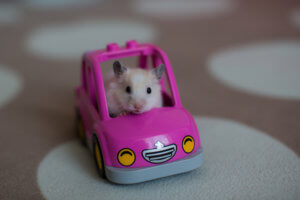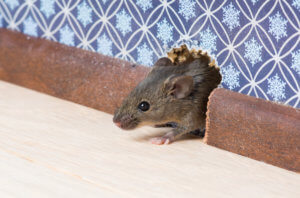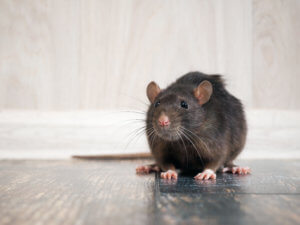In recent years, the auto industry has become very focused on the initiative to “go green” with a major shift to try and reduce reliance on petroleum based products. This has led to a whole variety of car parts being made from different organic substances such as soy, corn, sugar cane, recycled wood, castor beans, etc. Building car parts out of these organic substances has enabled car manufacturers to create more environmentally friendly and efficient products, BUT it hasn’t come with out its consequences.
If you have read one of my most popular articles, Does your car have soy based wiring? you will know that soy based wiring is causing some very costly issues to newer car owners with rodents being attracted to the car engine wiring for food. This has resulted in a few recent class actions lawsuits being filed against both Honda and Toyota in 2016. Though soy based wiring seems to be getting all of the recent media attention, the fun isn’t stopping there. Car manufacturers are making a whole slew of other organic car parts and the damage reports are just starting to come in.
Here is a list of each of the organic car parts that we know of*:
- Rilsan PA 11 – Made from castor oil and is used in flexible tubing and monowall fuel lines. Ford had agreed to use these in their vehicles.
- Rilperm multi-layer fuel lines – Made from castor oil and is used in quick connectors, pneumatic brake hoses and friction parts. It is also used in conductive fuel pump modules for General Motors cars.
- DuPontTM Zytel RS, PA 6.10 – Made from castor beans and sugar cane. Used in the 2009 Toyota Camry as the automotive radiator end tank. This was proposed to be used in all new Toyotas so this may potentially be in use for all current Toyota vehicles. Toyota was awarded with the Most Innovative Use of Plastics award in the Environment Category from the Society of Plastics Engineers (SPE) for this product.
- Bioplastic head liners, sun visors and floor mats in the Toyota SAI and Prius.
- Castor Oil based fuel lines in FIAT cars
- Bioplastic door trim and panels, structural insert parts and air ducts for Mitsubishi vehicles.
- Ford is in talks with Jose Cuervo to use agave fibers for wiring harnesses, HVAC units, and storage bins.
- Mazda has announced that they have created a bioplastic that is 88% corn and 12% petroleum that can be used for electrical parts.
- Soy based polyurethane foams in seat cushions and seatbacks for many 2010 to 2013 Ford models including the F-150, Mustang, Focus and Escape, including the Lincoln Navigator, and Lincoln MKS.
*It was difficult to find the information to put together this list. Many of the car manufacturers do not publish this information due to the proprietary nature of the technology being used and none of the above has been specifically confirmed directly with the car manufacturers. Much of the above was taken from public announcements that the car manufacturers made. Many car manufacturers have refrained from making recent announcements regarding the use of bioplastics in cars and I could imagine this has something to do with the recent lawsuits being filed and to try and limit their liability.
To make matters even worse, Ford has even created a 2016 Ford Cook Book with the different types of foods they use to make their organic parts!
Recent data has shown that the car manufacturers are looking to increase the amount of bio-based plastics in cars by 400% within the next 5 years. Given that the industry is showing no signs of slowing down the use of bioplastics in cars, this could just be the tip of the ice berg for rodent damage to cars. Hopefully these recent class action lawsuits with Toyota and Honda will ensure the appropriate testing is done on new bioplastics to ensure unwanted wildlife is not attracted to these parts.
Given the current disregard for responsibility by car manufacturers for rodent damage to cars, we can’t expect that they will change their stance any time soon. This ultimately means that it is up to YOU to stay protected and to keep an eye on things. If you haven’t already, please check out the article The 5 Minute Check That ‘Can Save Your Car (and your sanity!). If you find the presence of rodents, take action ASAP and head on over to the Home page.
I hope that this article has been helpful! For any questions/comments, please drop a note below!
Thank you!!
-Rat King Dave
This page contains Amazon Affiliate links. I will receive a commission for any purchases made through these links, though at no additional cost to you.






My Toyota RAV4 2011 is being damaged by rodents/mice what I took into Toyota and their never mentioned anything about the soy products – go figure I am going to call Toyota Customer Service and complain and tell them they can pay for the damage ! Im in the middle of moving and now have this to worry about I HATE crooks not only that they should pay for all the rodent traps/spray I had to go buy !!
Hi Ali! I apologize for the delay in my response. I abandoned my role as Rat King for a few years, but now I am back to protect the Kingdom! I hope you were able to resolve this whole issue in addition to putting some preventative measures in place. But to address your comment, I don’t think it’s typical that a Toyota employee would make any reference to the soy based wiring as any sort of reason for the rodent damage. Per the class action lawsuits, Toyota has taken a firm stance that they don’t believe the soy based wiring has any effect on whether rodents will chew on the wires or not and I’m sure they don’t want employees commenting on such. I’m sorry that you had to deal with this rodent issue while moving at the same time as both scenarios can be stressful. If you have any questions or if I can be any more help, please let me know. I will be around now. Thank you! RKD
I bought a 2020 Hyundai Palisade SEL back in 2019. Gorgeous SUV with space for 8, tons of cargo space, did everything but my dishes. That is until one day, in the dead of a Northeast Wisconsin rural country winter…my HVAC system was dark and hot air was blowing out of the vents. Like SUPER hot air. Confused, I called the dealership and made an appointment to have it looked at.
Now, in 30-years I’ve owned many cars. I had one accident and one ticket when I was 16 and 17 years old (driving my parents’ car). Since then, I kept my.nose clean and drive defensively and have had no insurance claims or tickets in all that time. I was proud of that! The dealership calls me and says, “This is going to be a repair your insurance will need to cover. We’re looking at over $5k in rodent damage. Wait….WHAT???? Are you effing kidding me? 8 cars in that same garage of all different makes and models and suddenly the newest addition gets eaten by rodents??? I was shocked! It’s never happened to me before, ever! So, I jump online and do my research and find out my brand new, $48k Palisade is EDIBLE!!! I was beyond miffed. No one told me about this at the time of purchase. In fact, they acted shocked when I told the saleswoman who sold it to us that she sold me a buffet on wheels. The service department manager said, “Yeah, it’s quite common, so my guys just put dryer sheets under the hood. Mice don’t like the smell of them.” Wait, what??? Why do I have to do anything to protect my car from the “safe” environment in my garage? Why do I have to do anything special other than rust proof and keep it clean? Dryer sheets? During that same conversation, the service manager points to another Palisade in the service bay and announces “They’re looking at $18k in rodent damage.” He promptly showed me pictures and I promptly said, “I want to get rid of it. I’m not keeping an edible car anywhere near my house just waiting for the next insurance claim.” So, I traded it in for a Chrysler 300 NOT made with bioplastics. Moral of the story is, is folks can say mice and rats have been eating cars for decades and I say BULL. This was the first time in my entire life I’ve ever had to deal with an eaten car. It’s a travesty that older cara are now more attractive to me because they aren’t made with bioplastics. The car manufacturers are doing us all a disservice. They make edible cars, they should charge edible prices. That’s the last time so will ever pay a year’s salary for meals on wheels.
Hi Jeana! I’m so sorry for the delay in my response (but the Rat King is back!). Reading your story makes my blood boil as it reminds me of when I first found out I had rodent damage to my new cars. I completely agree that car companies are doing us all a disservice by taking a blind eye. Honestly, I am not surprised that the insurance companies aren’t taking a stance as they are the big loser here. It is true that rodents do have a history of chewing up cars, but I really think the issue has increased in occurrences drastically since cars started using bio plastics. Anyways, I hope that you have had no further damage to your cars. I would suggest to still take a look under the hood often of all your cars to ensure there are no signs of rodents. Thank you for sharing your story! RKD
Hello and thanks for such a thorough article.
Certainly animal damage to cars, generators, radio transmitters, etc is not entirely new. Over 20 years ago I heard of parts of the country where porcupines(!) had begun craving rubber hoses, belts, and other rubber components.
I can’t help but wonder if the problem may be more complex than just the presence of bio-polymers. While it is true that many of these critters have exceedingly good noses, the feedstock for most chemicals is so far removed from the final product that the simplistic “if it is made from corn it must taste and smell like corn” is suspect.
My hunch is that the plastics might be part of the problem, but there may be other things at work.
I am currently involved with two emergency generators with rodent problems, but I have no reason to think anything unusual is going on.
For example, the house I lived in last year was infested by super mice. They didn’t have any interest in three different types of mouse traps with three different types of bait Peanut butter, bacon grease and commercial bait). And they were extremely bait shy, though eventually I found a poison that ate a bit of. The only thing that worked was glue traps. That is different from any mice I have encountered in my nearly 60 years. Also, Americans eat in their cars more often than ever before. That isn’t in the engine compartment, but could act as a lure to the area.
Thanks again.
Hi Rolf! You are certainly correct that rodents getting into cars and damaging wires has been a thing for decades. Rodent teeth continually grow so they need to chew on things to essentially trim their teeth. Given the long history of rodent damage to cars it has been difficult to prove that soy based wiring is exacerbating the problem, hence why all the lawsuits were dismissed. Regardless of what the reality is, car manufacturers are certainly benefiting from the damage being done by these rodents at the expense of the car owners and insurance companies.
Separately, that is interesting to hear about the mice. When setting the traps be sure to set them flush against a wall. Rodents always prefer to walking next to a vertical surface.
And, leaving food in cars is certainly not helping the situation lol.
Appreciate your comment and glad to heed that at least the glue traps worked for you.
Thanks! RKD
RAbbits! 2015 Ford F-150 three times! First $1500 at dealers two weeks. Third last week vacuum hoses and BRAKE LINES! My 2016 Ford Escape this week all wires to harness severed, fuel line in rear chewed and panel under front bottom of car chewed everywhere. Rabbit hair stuck here and there. Someone will die when the brake lines are gone or when fuel hose leaks gasoline over
Oh man Dlane! Those rabbits are relentless and are, unfortunately, really tough to defend against! Please review the article written on Rabbits for guidance. I hope this helps you! RKD
Have had 2014 Honda Odyssey repaired 3 times. $1200. $1200, $650.
Can’t keep rats, or mice, or squirrels away. Want to buy a new minivan. What kind? No bio wire coverings please.
Hi Cindi! Oh man, I’m sorry to hear that the rodent just keep coming back for more (and I apologize for just replying now!). The issue is that the rodents have marked your car as “safe” with their urine and this acts as a signal to other rodents that this is a safe place to go. You need to implement some techniques and solutions that will start to make the rodents feel uncomfortable in your car (e.g. Leaving the hood up at night, shining bright lights, spraying with peppermint spray, etc.). I would highly suggest that you check out the Home page and review the steps on there. To answer your question, all the large car manufacturers are using the same type of wiring so no newer car is really safe. This is why it is important to implement some preventative techniques. I hope this helps! If you have any more questions, please let me know! Thank you! RKD
I have s 2013 mercedes and wiring has been chewed by rodents. Mercedes wont just replace wires but want to Gut the car to replace entire harness. This will cost thousands. Do they use bio plastics, and soy coated wiring which attratxz
Hi Bernice, I’m sorry to hear about your car! I’m not surprised that Mercedes would want to replace the entire harness because they are trying to rack up as large as bill as possible on the customer’s and the insurance company’s dime. You most likely have comprehensive insurance coverage so even if the cost is in the thousands your max out of pocket should be $500. As far as I am aware, Mercedes does use soy based wiring in their cars. And to be more direct, you can ask any dealership if they use soy based wiring in their cars to confirm. In certain states the Lemon Law requires a car dealership to disclose any facts that would be considered material to the person who is trying to make a decision on whether or not to purchase the car. Please let me know if for some reason they don’t tell you if your car has soy based wiring and I will reach out to some dealerships to confirm. Once you get your car back please remember to take some preventative action so that this won’t happen again! Check out the Home page and let me know if you have any questions. Thanks. RKD
We need to buy a car and almost bought A RAV4 by Toyota .
We already have mice problems with our old cars getting in fan area.
You are saying most cars use soy products. So what is safe to buy?
Maurice Lamarche
Hi Maurice! This is a wide spread problem and to be honest I don’t know if there are certain makes/models that are safe. Car manufacturers are not taking any action to try and prevent this from happening and by introducing more bio-based products in cars, they are making things worse. This is specifically why we need to take matters into our own hands and figure out how to prevent damage from occurring in the first place no matter what car you have. I would highly suggest that you take a look at the article I specifically wrote for mice: https://www.howtopreventratsfromeatingcarwires.com/2017/04/20/prevent-mice-eating-car-wires/
Please let me know if you have any other questions! Thank you!